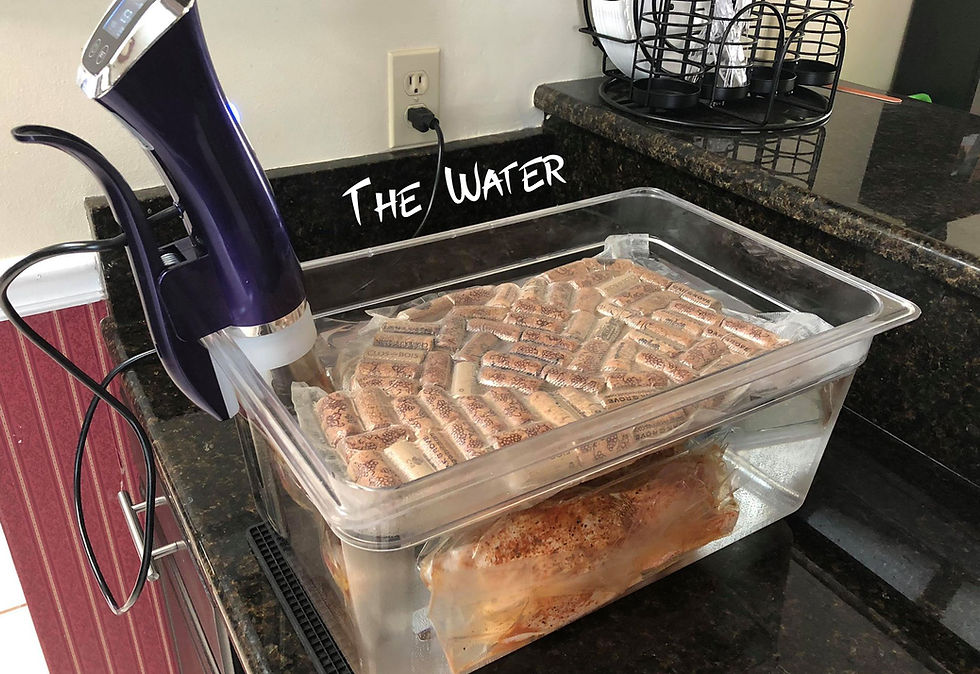How can Sous Vide (and/or cooking in plastic) be safe?
- Darrin Wilson
- May 30, 2018
- 3 min read

one of the most often asked questions that comes up in the sous vide groups on Facebook from people who are new to it is "Is it Safe"? Two of the main reasons this is asked is due to the cooking temperatures used in sous vide are usually well below what the USDA says are "Safe" to avoid food borne pathogens. The other is from those how fear that cooking in plastic may leach unwanted chemicals into their food. I will address these two topics below.
Unsafe Temperatures?: There are several websites and hundreds of articles written about the subject, but the most informative and scientific one that gets quoted most is the website and book by Douglas Baldwin called "A Practical Guide to Sous Vide". In this book and website you can find all kinds of research, charts, graphs, information, videos, etc that go deep into how and why cooking sous vide is safe. You will also learn what sous vide makes it possible to cook somethings in way you never thought possible before, like cooking chicken at 145 degrees instead of 165 degrees. Cooking pork to a medium rare doneness with the worry of getting sick. Making a chuck roast as tender as a filet and still a nice red medium rare. There are also other resources like Jason Logsdon's "Amazing Food Made Easy" that offer information geared to the new sous vide cook, with helpful time and temperature guides, recipes,and other great advice. If you happen to follow Chef and Harvard Graduate J. Kenji Lopez-Alt author of the book "The Food Lab", you will know he is a big proponent of sous vide cooking and he has some great information on his "Serious Eats" website. If you have purchased the Joule sous vide device, you should also know of the guys at "Chef Steps" who created it and they have tons of information on their site dedicated to sous vide cooking.
Cooking in Plastic??: This questions tends to be asked a lot from people who are concerned that cooking in plastic can bleed some cancer causing chemicals into the food they are cooking. This is all due to some articles that have been written over the years concerning soda and water bottles, Tupperware, and other plastic containers that were found to have BPA's or other harmful chemicals many years ago. The truth is, all food safe bags like ziplocs, vacuum saver, hefty etc. are free of any of those type of chemicals. In an age where people are concerned about organic, gluten free, free range, and other "Buzz Words" in there food, some will still not believe the research and proof and still not cook in a plastic bag. There are other options out there like silicone bags and mason jars, but those are not very practical and do not work as good as normal, safe, food grade plastics. To put some minds at rest, here are a couple of articles addressing this topic. I made sure to include some from sources outside the sous vide industry. "Sous Vide Packaging" "Bon Appetite Magazine" "WebMD Article" "Cnet Article" "Berkeley Wellness Article" these are just a few, but there and many more.. Yeah, you will still find some out there that say the opposite, but they usually do not have any real science or research to back them up.
Bottom line is, Sous Vide cooking is one of the safest ways to cook, but just like ANY other cooking method, you have to practice safe food handling. make sure you wash your hands regularly, do not cross contaminate foods, wash and clean your equipment. basic cooking saftey 101.







Comments